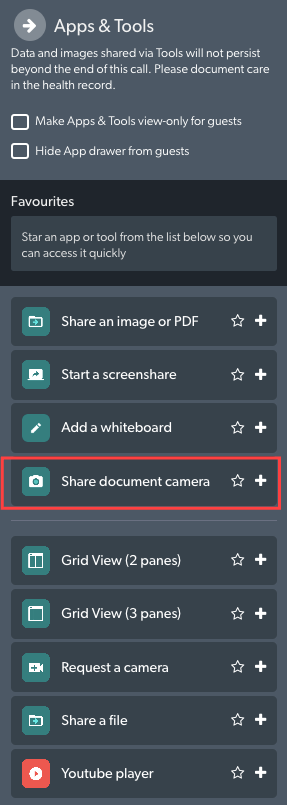How to select a scope or camera in a Video Call
Select a medical camera or scope to share into your call
There are a number of ways to share a camera or scope into a Video Call, depending on your clinical requirements. The examples below outline the available options:
|
1. A health service provider with a patient can plug in a USB device, click on the Settings cog (highlighted at bottom left) to open the Settings drawer and select the device as their camera (switch camera). This will replace their camera feed so the specialist at the other end will no longer see them or their patient on the screen.
They can also switch their camera by clicking on the switch camera icon in the bottom left call controls. |
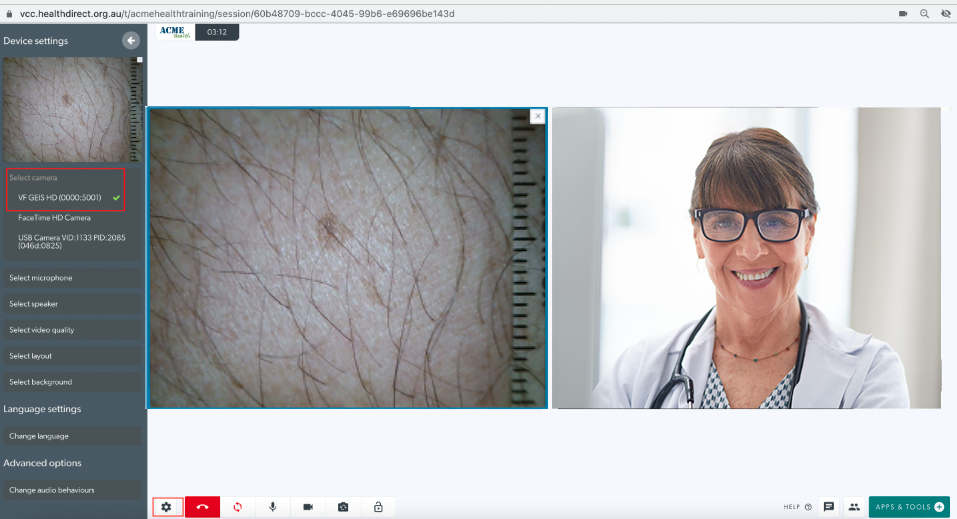 |
|
2. During a Video Call, a specialist or doctor can request a camera from a health service provider who is with a patient. To do this they go to Apps & Tools and select Request a camera. |
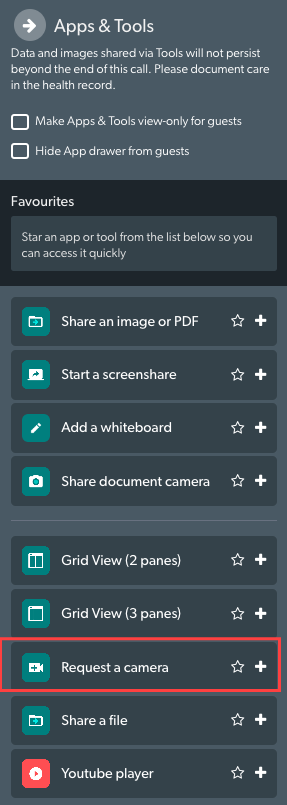 |
|
Once requested, the health service provider who is with the patient will see this screen. They click on Select a camera to share to access the selection drop-down.
|
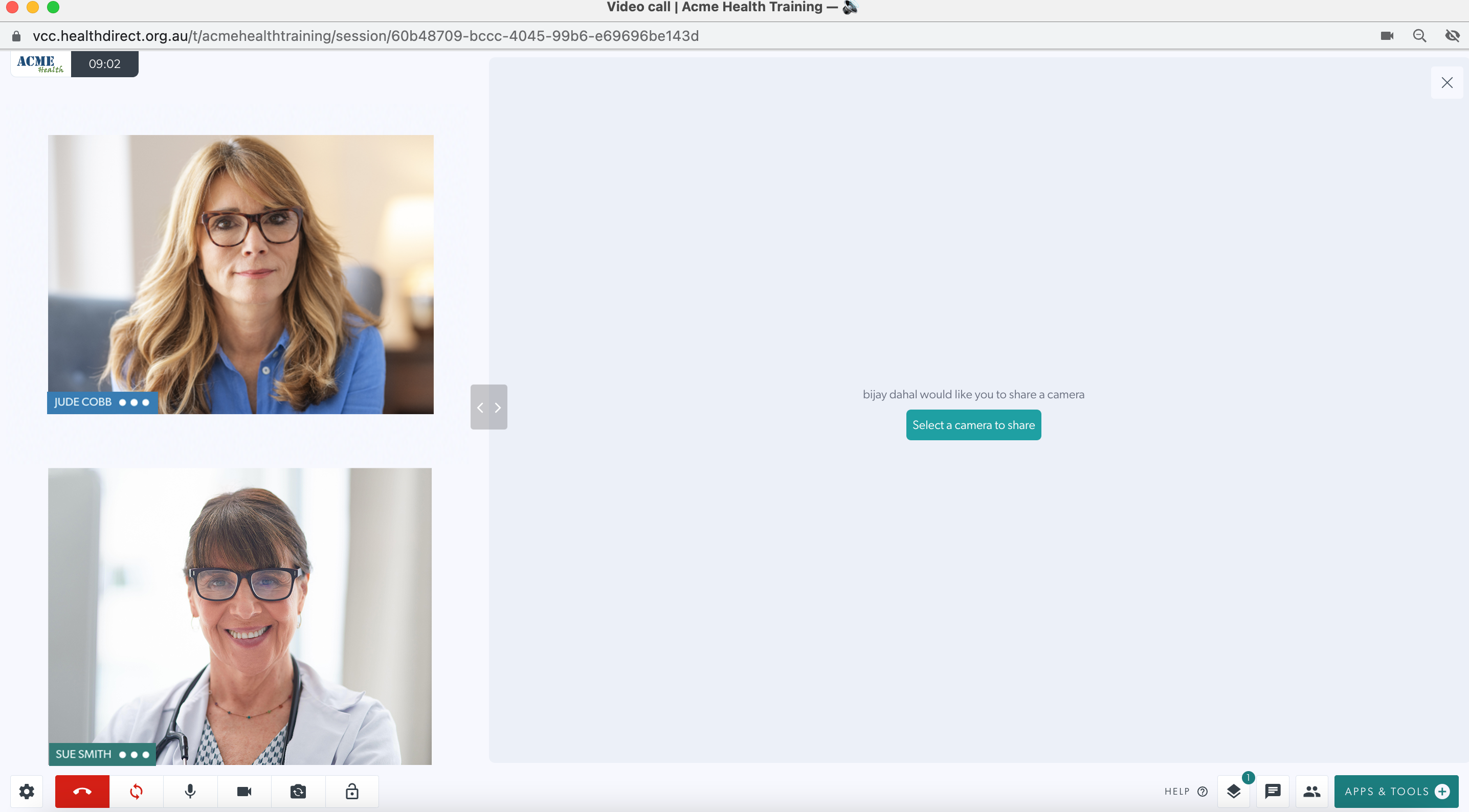 |
| From the list of available cameras, they select the medical device to share into the call. With this workflow, all participants will remain on the screen when the scope or probe shares into the call. | 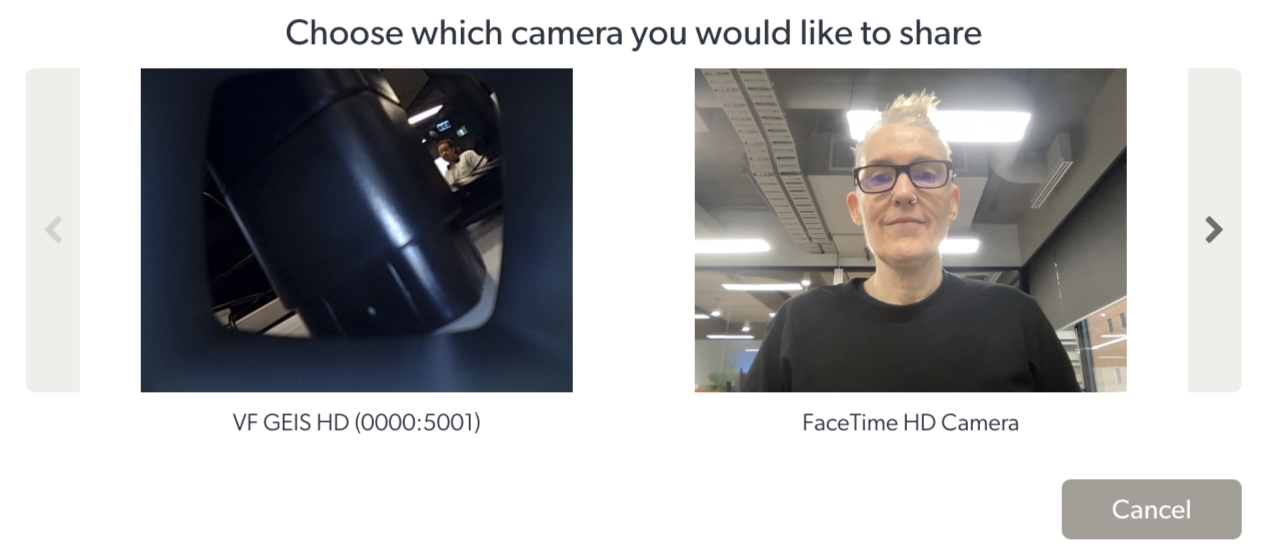 |
| The specialist viewing the shared camera has the option to select a Video Quality, as highlighted in the bottom image under the shared camera image. Many scopes are Full High Definition, so High can be selected. | 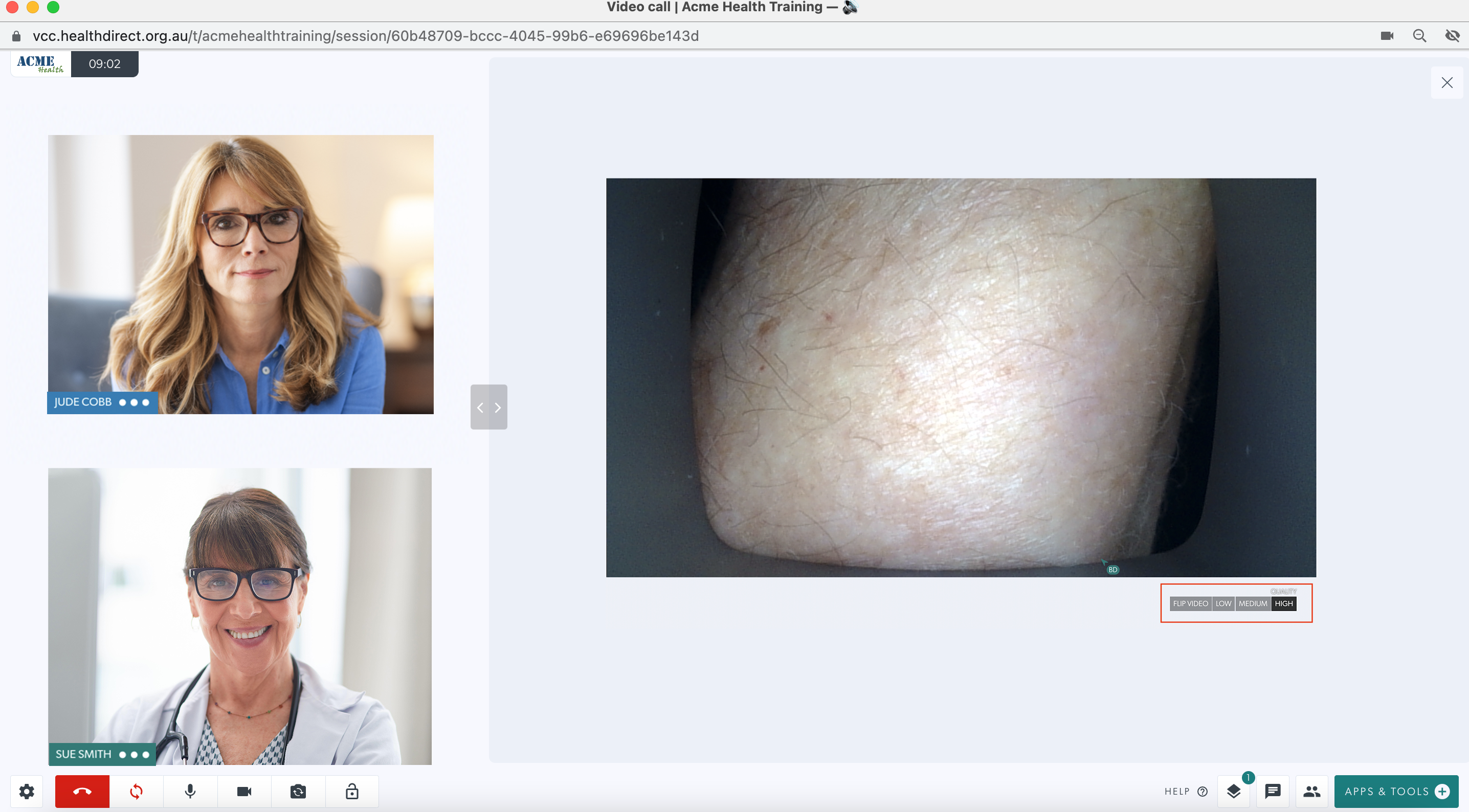 |
|
3. A health service provider with a patient can choose the option to Share Document Camera into the call. Please note that with this option you can share any additional camera into the call and it supports high resolution cameras. Click on Share Document Camera in Apps & Tools and a selection box will display showing the available cameras for your device. Select the required camera and it will be added into the call. |
|
